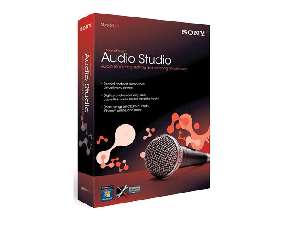Whether you’re looking to fine-tune the audio tracks on your video product, spruce up your musical creations, or restore and digitize analog audio format, today’s audio software can tackle a range of duties.
Using a PC/MAC and a piece of editing software, you can create complex, multitrack tunes with a variety of sound effects that would make George Martin envious.
What to Look For in Audio Editing Software
A good audio editor will give you all the tools for both sound editing— re-arranging tracks, cleaning up background noise, smoothing out tones—as well as music creation. Most editors let you connect instruments and microphones directly into your PC (or Mac) soundcard to record the real-time audio. From there, you can add effects, voice-overs, and other enhancements before exporting a finished file as an MP3 files or a WAV file that you can burn to a CD. They also support the Musical Instrument Digital Interface (MIDI) so that you can create musical tunes according to a common standard.
If you need to enhance or create audio tracks for use in a video, look for editors from the likes of Sony or Adobe that are tightly integrated with video editing software. If you just need to tune up your own recordings or digitize and clean up an analog collection, a standalone audio editor should suffice.
To enhance the functionality of your software, many editors support Virtual Studio Technology (VST) plug-ins. These plug-ins can mimic the sound of classic instruments or give you access to a wider range of effects than what your program offers out of the box. If you see your audio needs growing with time, be sure your program supports VST plug-ins.
Here’s a look at some popular audio editing software titles:

AVS Audio Editor 7.0: AVS Audio Editor is, as the name suggests, a multipurpose audio editor. Using Audio Editor you can cut, trim, mix and delete audio files using a timeline interface. Built-in filters let you purge distracting elements like hisses and crackling. It can record audio from a variety of inputs and can export your finished track in a variety of digital file formats including MP3, WAV, WMA and AAC, among others. You can even use the software to create ringtones in the M4R format for your iPhone.

Adobe Audition: Adobe put the kibosh on its Soundbooth audio editor earlier this year, but has instead introduced Audition, which is better integrated into Adobe’s Creative Suite family of software products. Audition features multitrack editing with batch processing to tackle fixes faster. It offers a customizable interface, real-time input monitoring, a library of effects that can be added to your tracks, and “roundtrip editing” that lets you move audio clips from Adobe’s vide editor (Premiere) into Audition for fine-tuning and then back to Premiere for use in a video.
There’s a library of royalty-free sound effects, loops and music beds at Adobe’s ResourceCentral. A history panel lets you quickly undo unwanted changes or fix mistakes.

Sony Sound Forge Audio Studio 10: Sony’s Sound Forge ($43) is a complete audio solution for creating your own music. It can record live audio – just plug your instruments or microphone into your PC’s sound card and jam away. When you’re done, Sound Forge can enable you to balance sound levels, trim and remove unwanted sounds, apply effects to your music such as reverb, delay and EQ or create loops and samples.
To augment your own work you can import other tracks from CDs and MP3s. If you’re sitting on some old vinyl or cassette tapes you can import those as well and use the software to help clean those up.
If you want others to sing along you can create karaoke tracks from audio files using a vocal eraser tool, which, as you can guess, purges the vocals from a song while keeping the supporting music in tact. The software offers a customizable interface, so you can dock various windows together to suite your needs.

Sony’s ACID Music Studio: If you’re more interested in creating music vs. editing it, check out Sony’s other audio title – ACID Music Studio. This $40 program can create songs based on the Musical Instrument Digital Interface (aka MIDI) with a mixing console to view all of your tracks on a single screen. You can plug in your instruments directly into your computer and add effects such as élastique timestretching, EQ, reverb, delay, chorus, flange, phase, distortion, and echo. You can customize the software’s screen as well to suite your workflow needs.
The software also features a pair of plug-ins for piano and guitar sounds to mimic the effect of a VST piano or a guitar played through a (virtual) stack of Marshall amps. ACID offers what Sony calls its Beatmapper tool, which finds the tempo of your song to make creating remixes easier. When your tune is right where you want it you can burn it to a CD or export the file as an MP3.

NCH WavePad: This editor lets you slice and dice your audio files as well as add effects such as reverb, echo, reverse, and amplify. It supports VST plug-ins, so you can bulk up its functionality as you go. You do get access to a free library of sound effects and music for experimenting.
WavePad can apply effects in batches if you need to make quick changes to multiple files and also offers text-to-speech if you want to add a voice-over to your tone (there’s also a voice-changer if you want to get creative). The software supports multiple sample rates, from between 6 to 196kHZ in either stereo or mono. A Standard edition of the software costs $35. A Master’s edition with VST plug-in support costs $60.

